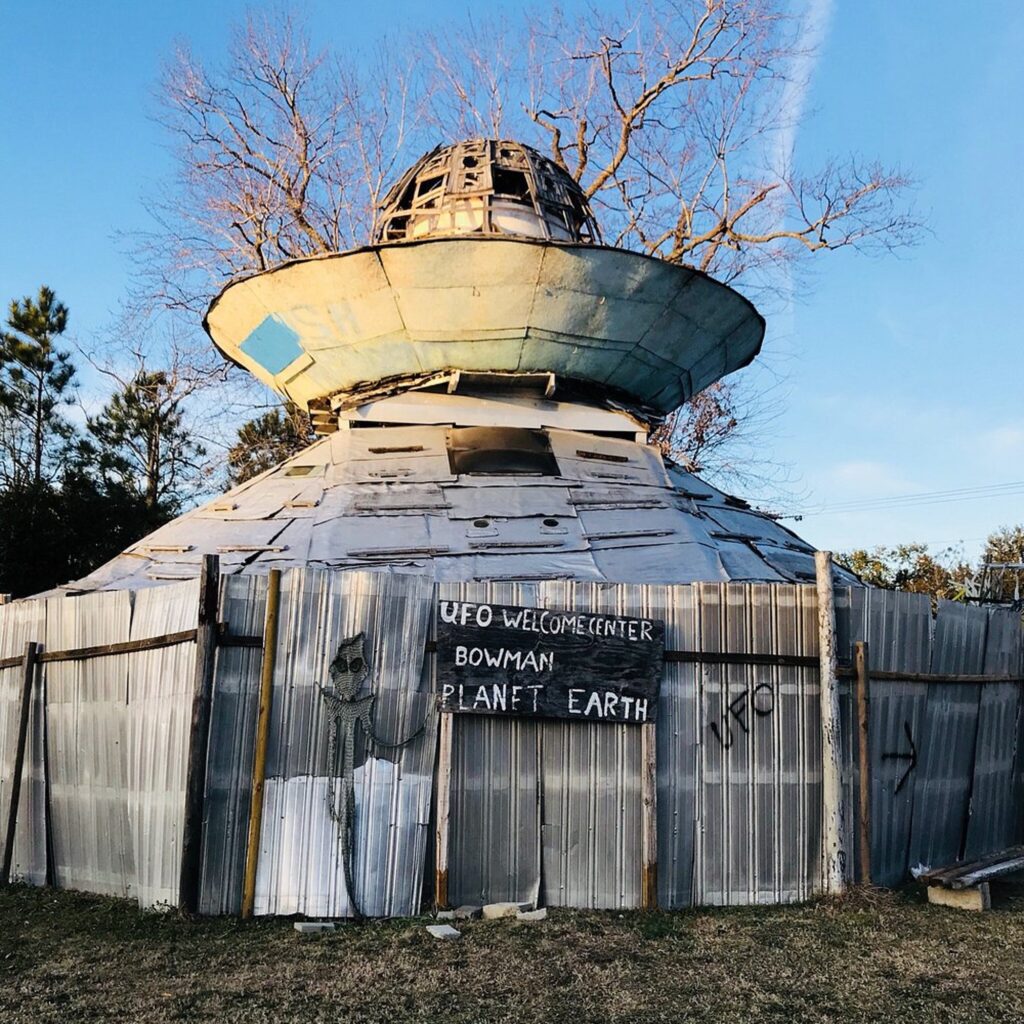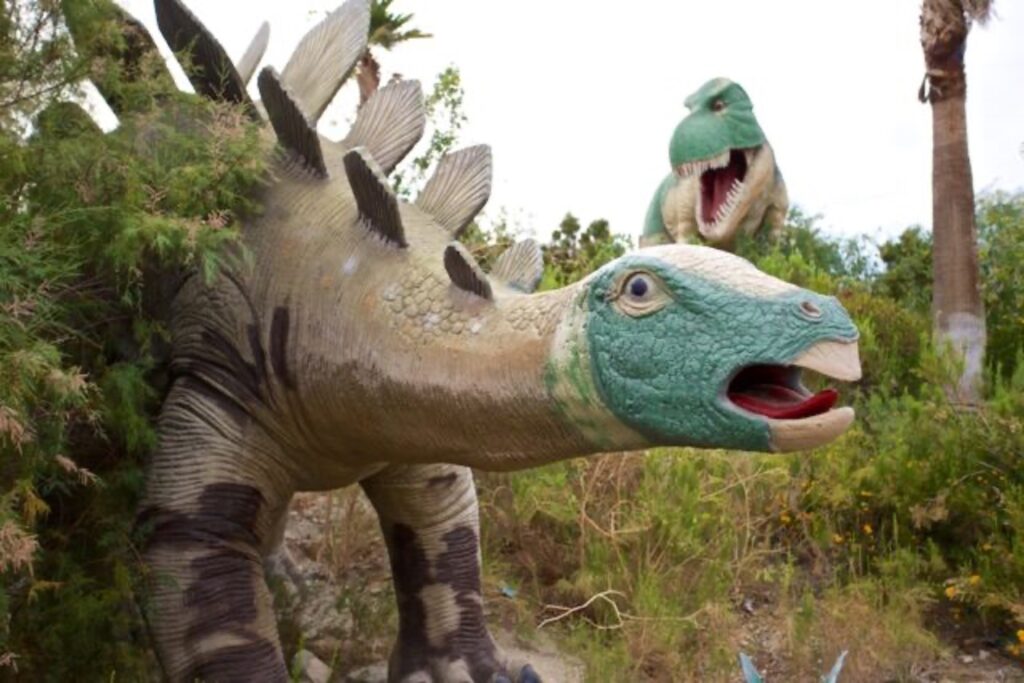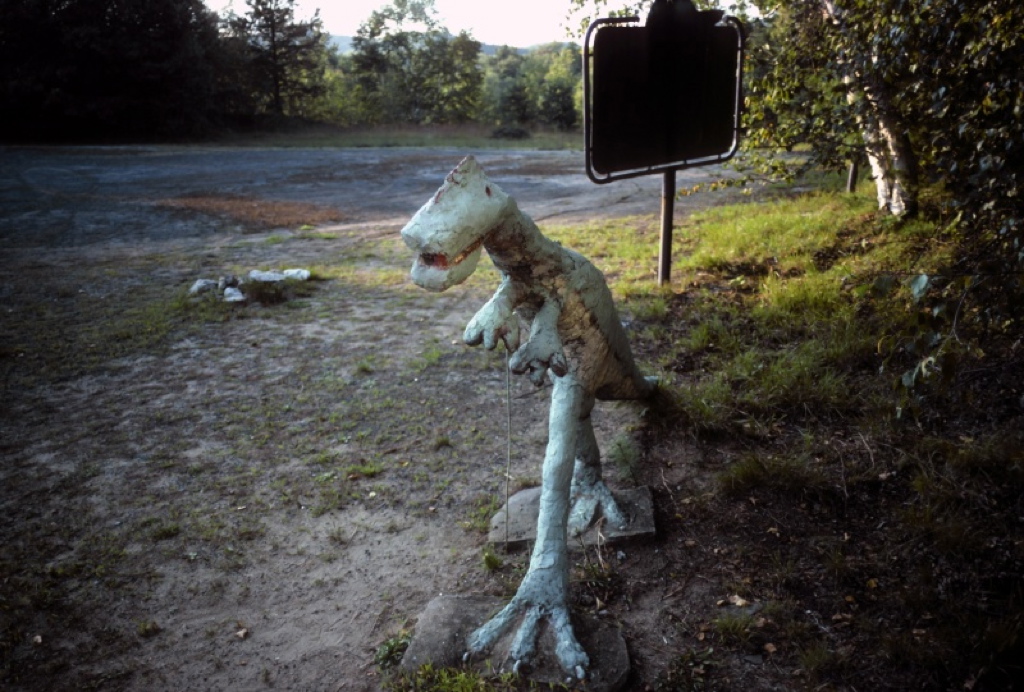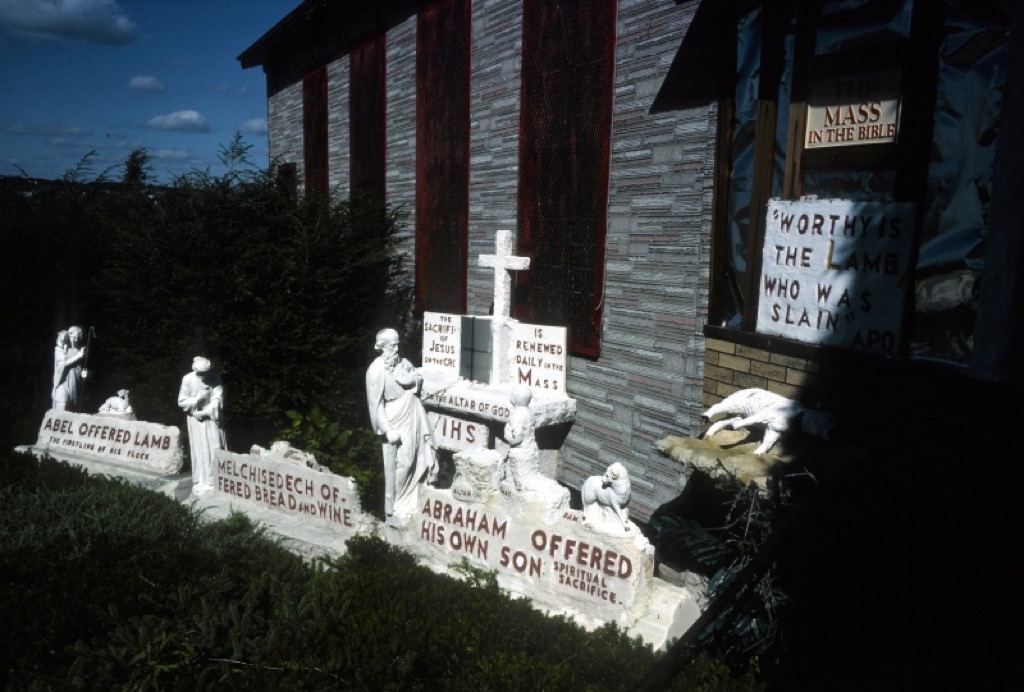The End of Roadside Attractions

The UFO Welcome Center in Bowman, North Carolina, which was destroyed by a fire. Photograph courtesy of Jane Stern.
I was fortunate to have traveled America’s blue highways in the golden age of roadside attractions. The year I fell in love with roadside attractions was 1971, when my husband, Michael, and I (newly married and fresh out of college) crisscrossed America, hunting for small-town cafés, diners, and BBQs, compiling a book that would be called Roadfood.
Back then, to review these unheralded mom-and-pop cafés was strange. Foodies (a term that had yet to be popularized) were interested only in eating at gourmet bastions in big cities or abroad. These Continental restaurants were expensive; they served French or northern Italian food and had waiters wielding big pepper mills.
It did not take us long to realize we liked eating and traveling more than we liked what we’d studied, so as card-carrying contrarians with a car and a few bucks in our pockets, we decided that simple American food needed a champion. We spent the next three years on the road, scouting out these places. We drove two hundred miles a day and ate (on average) ten meals a day. When we weren’t driving or eating, our attention was drawn to weird things by the side of the road.
For those of you too young to know what a roadside attraction is, let me explain. Unlike big “fun” corporate endeavors like Disney World or Busch Gardens, a true roadside attraction was a brainchild of an individual with a vision. These people were usually oddball folks who lived in rural areas. Ignited by their own passions or obsessions, they invited the public in to see what they had devoted their life’s work to.
As two oddballs on our own strange quest, Michael and I were the perfect audience to find roadside attractions mesmerizing. They also provided us a wonderful opportunity to stretch our legs and give our stomachs a rest. These roadside attractions were like punctuation points on a trip. Time to take a breath, to pause, to step inside someone else’s strange dream.
A good roadside attraction would get the car traveler excited miles before they arrived. Back then, billboards were cheap and plentiful, and car travelers would start to see seductive come-ons to SEE LIVING MERMAIDS!, COME FACE TO FACE WITH A REAL SASQUATCH, or BEHOLD JAYNE MANSFIELD’S ACTUAL DEATH CAR miles before the actual site. At odds with the often cinematic, flashy billboards, the attractions themselves were mostly humble hand-built structures located in the middle of nowhere.
Some roadside attractions were located a stone’s throw from a highway exit; others required a miles-long jaunt into places not shown on a map. As this was years before the internet or GPS, we did not have Siri telling us where to go. We rolled the dice, and as civilization fell away, we prayed that we would not meet the now-clichéd fate of so many horror movie characters. We were overjoyed when the owner/enthusiast of the roadside attraction welcomed us in. We paid a few bucks or some pocket change and were shown the way into the exhibit.
Having grown up in Manhattan, a short walk from the Guggenheim, the Met, and the Frick, I knew what a real museum looked like. This is probably why I was so smitten by these do-it-yourself collections. They were the complete opposite of the big-name bastions of culture.

World’s Largest Ball of Twine. Photograph by Jane Stern.
The World’s Largest Ball of Twine (Cawker City, Kansas), the Rare Fur-Bearing Trout (South Otselic, New York), and the Coon Dog Cemetery (Cherokee, Alabama) are still as fresh in my mind as crisp tissue paper. Excitement is contagious. Maybe one reason that I fell deeply in love with these curiosities was the heat transferred by the creators. The more personal roadside attractions were run by people with “unique” psychological profiles. Utilitarian verbiage might use terms like obsessive, hoarder, or simply nuts, but where in the DSM-5 would one find a diagnosis for a collection of 800 Used Oil Rags (Davenport, Iowa) or the Tree That Owns Itself (Athens, Georgia)?
Of all genres of roadside attractions, dinosaur parks are my favorite. If you have seen the skeletons of real prehistoric giants at New York’s American Museum of Natural History or at the Field Museum in Chicago, you will need to recalibrate your brain for the roadside versions.
Michael and I stumbled upon Nash-ional Dinoland in South Hadley, Massachusetts, in 1981. By then, we were veteran road travelers but not so blasé that finding Dinoland did not leave its mark. To this day it remains my favorite roadside attraction.
Exactly how we found Dinoland is lost to me. Perhaps they had a billboard or some signage, but I remember it being only a dilapidated house on the outskirts of a small New England town. There was a rusted pickup truck parked by the front door with DINO DELIVERY WAGON shakily hand-painted on the door.
It makes sense that the house and truck looked weathered, because Carlton S. Nash opened the place in 1930.
Mr. Nash remains a man of mystery. No one knows what drove him to become obsessed with dinosaurs. He was not a paleontologist, just a man with a small plot of brown soil that he thought bore the blurry footprints of what might have been a T. rex or a brontosaurus.
Not being a scientist, he did not investigate his discovery, nor (I suspect) did he care—the muddy footprint was enough to propel a lifetime calling as a roadside dinologist.

At Nash-ional Dinoland. Photograph courtesy of Jane Stern.
Nash-ional Dinoland checked every box of roadside perfection: shabby, weather-beaten, with a hodgepodge of disjointed offerings for sale. The building was listing and in need of paint; broken shutters hung from the windows. Inside, there was a jumbled shop of things to admire and purchase. There was a “bargain table” of five-hundred-million-year-old trilobites selling for “three for a buck,” a “petrified dinosaur gizzard,” and a vintage Dino gasoline sign. Framed faded photos of General Patton, Dale Carnegie, and the German movie director Fritz Lang (all fellow dinosaur fans) lined the wall.
But the singular jewels in this roadside paleolithic crown were the dozens of handmade dinosaurs constructed by Mr. Nash. These dinosaurs (a good two dozen) were located all around the outside of the building. Unlike serious museum dinosaurs, they did not have a bone or skeleton anywhere in their bodies. Nash’s monsters were made of papier-mâché, globs of clay, cement, and whatever he had on hand. To Mr. Nash, these were not whimsical fantasy dinosaurs—they were allegedly the real McCoys, clearly labeled as brontosauruses, triceratops, and toothy T. rexes but each so stunted and strange that even the man-eaters rearing back on their spindly hind legs were as scary as a milk carton. The largest one came up to my waist.

At Nash-ional Dinoland. Photograph courtesy of Jane Stern.
In the hands of Mr. Nash, these beasts were beyond lifelike; they were phantasmagorical. Outrageously hideous, some looked like dolphins caught in a washing machine, others like crazed mountain men who ditched their overalls and grew claws and fangs. Each one sillier than the next, the work of a true obsessive artist who saw no reason to color within the lines. I could look at them forever and never grow bored. The place closed in 2019, after Mr. Nash’s death.
If dinosaurs were one of the main themes of roadside attractions, then Jesus Christ was not far behind. From Maine to California, one found towering crucifixes, statues of Jesus alone, Jesus with his homeboys, Jesus with Mary and sometimes with inexplicable companions like a chihuahua or a pile of cowboy boots. Unlike pint-size dinosaurs, when it comes to roadside Jesus, the bigger the better. Like the huge Christ that looms over Rio de Janeiro, many immense Christian visions can still be found on the road. The world’s second-largest crucifix (fifty-five feet tall) is in Indian River, Michigan, and is dwarfed by Christ of the Ozarks, in Eureka Springs, Arkansas, a seven-story-tall blazing white statue crafted in a strange hard-edged art brut style.

Photograph courtesy of Jane Stern.
Is there a connection between dinosaurs and Jesus? When it comes to roadside attractions, the answer is yes! Dinosaur Gardens in Ossineke, Michigan, boasts the greatest blending of these two roadside attraction genres. Here, one can find a sixty-thousand-pound “life-size” brontosaurus. Leading you into its rib cage is a staircase. After scaling the staircase, you find yourself in a candy-stripe-painted shrine to Jesus Christ. The place of worship is gaudily decorated with paintings of the Lord with a blond page-boy hairdo alongside baroque crucifixes and painted Bible verses.
Most roadside attractions no longer exist. If families still travel together by car, it is a long shot to think that the promise of seeing the World’s Largest Cheese (Neillsville, Wisconsin) or the Poultry Hall of Fame (Beltsville, Maryland) would peel eyes away from iPad screens. Many of these attractions went out of business because no one visited them; others were probably offered money by land developers. Few people travel the back roads anymore, and highways are speckled with fast food and chain motels. Postcards and souvenirs are things of the past—no one wants a decorative spoon from every state. We feel like we’ve already seen national monuments in photographs. People get excited by Niagara Falls or the Grand Canyon only when someone falls in.
I miss roadside attractions. Enormous balls of twine, Jesus in a dinosaur’s stomach, jackalopes, and fur-bearing trout have faded in the mists of time. I especially miss the unexpected insights into the lives of famous people. Wandering through the Roy Rogers–Dale Evans museum in dusty Victorville, California, I compared it to the professionally curated Gene Autry museum in Los Angeles. Autry’s museum is immaculate and filled with silver-clad saddles and rare pioneer artifacts. Roy’s museum also has some fancy saddles but proudly displays a tube of sunscreen he bought in 1955, a poorly taxidermied possum he accidentally ran over, and a broken electric razor that one of his band members used on tour. Only one of these museums still haunts my daydreams. One last memory: The scruffy possum shares the Lucite display case with Roy’s superstar palomino horse, Trigger. Why? Why not? These are America’s purest memories.
Jane Stern has published forty-two books and has contributed pieces to The New Yorker, GQ, The Atlantic, and Gourmet. A permanent collection of her work is held at the Smithsonian Institute.
Copyright
© The Paris Review
